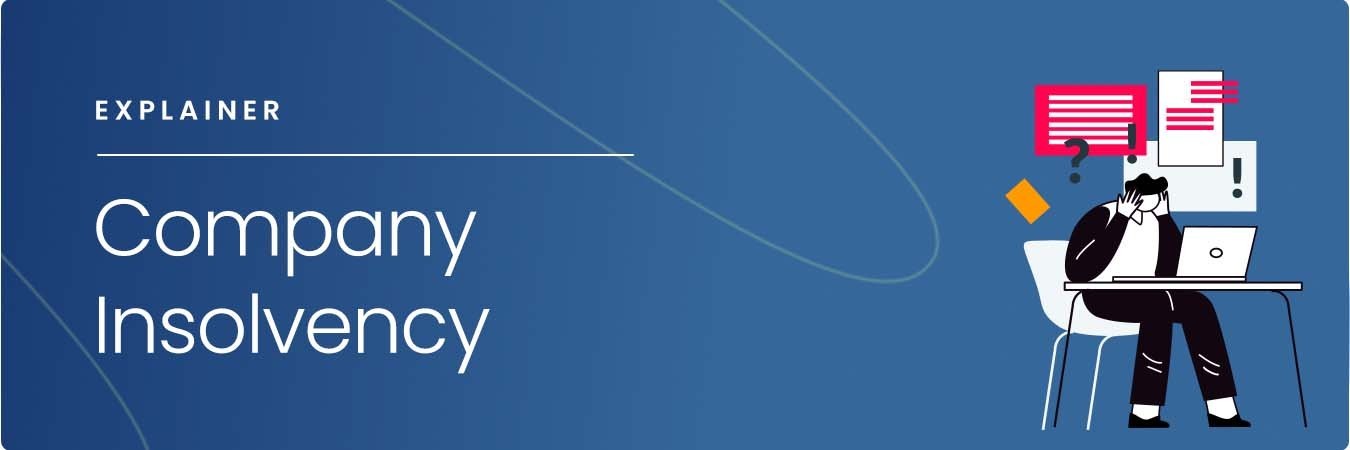Excitement About Insolvency Practitioner
Wiki Article
The Only Guide to Insolvency Practitioner
Table of Contents9 Simple Techniques For Insolvency Practitioner6 Easy Facts About Insolvency Practitioner ExplainedSome Known Details About Insolvency Practitioner How Insolvency Practitioner can Save You Time, Stress, and Money.Getting The Insolvency Practitioner To WorkThe Only Guide for Insolvency PractitionerAn Unbiased View of Insolvency Practitioner
Insurance is checked and controlled by state insurance departments, and one of their key goals is safeguarding insurance policy holders from the threat of a company in financial distress. When a firm goes into a period of financial difficulty and is not able to meet its responsibilities, the insurance commissioner in the firm's home state launches a processdictated by the laws of the statewhereby initiatives are made to help the company reclaim its economic footing.If it is established that the business can not be rehabilitated, the business is declared insolvent, and the commissioner will ask the state court to purchase the liquidation of the business. [Back] The insurance commissioner, either designated by the guv or elected, heads the state insurance policy department and displays and controls insurance policy activity within the state.
[Back] By acquiring control of a firm, the commissioner (or the insurance division) is, by legislation, the rehabilitator or liquidator of the company. In this capacity, the commissioner or division takes control of the business's operations. Instead than do so straight, the commissioner may maintain an unique deputy receiver to oversee the company's tasks - Insolvency Practitioner.
About Insolvency Practitioner
The receiver looks after an audit of the firm's properties and responsibilities and administers the estate of the company. In doing so, the receiver looks for to maximize the company's assets, move them to cash money, and afterwards disperse that cash money to lenders having valid insurance claims versus the insurance provider according to settlement top priorities specified by state regulation (in all states, insurance policy holders are top priority claimants whose claims are paid prior to those of basic creditors).All insurance coverage firms (with minimal exceptions) accredited to sell life or health insurance or annuities in a state have to be participants of that state's guaranty association. The warranty organization accepts the commissioner and the receiver in pre-liquidation preparation. Once the liquidation is purchased, the guaranty association provides protection to the company's insurance policy holders that are state homeowners (up to the levels defined by state lawssee below; any kind of benefit amounts above the warranty asociation advantage levels become cases against the company's remaining assets).
How Insolvency Practitioner can Save You Time, Stress, and Money.
The above protection levels use independently for each and every bankrupt insurance provider. [Back] When an insurance firm stops working and there is a shortfall of funds required to fulfill the commitments to insurance policy holders, state warranty organizations are triggered. Guaranty organizations have two major resources of funding when offering insurance coverage to policyholders. Initially, warranty organizations have subrogation rights to a proportionate share of the possessions continuing to be in the fallen short insurance provider.Second, insurance companies doing organization in that state are evaluated a share of the quantity required to fulfill the portion of the guaranty organizations' protected insurance claims not or else moneyed with estate assets. The amount insurance providers are assessed is based on the quantity of premiums that they accumulate in that state. The National Organization of Life and Health Insurance Policy Guaranty Associations (NOLHGA) is made up of the life and wellness insurance coverage warranty associations of all 50 states and the Area of Columbia.
NOLHGA develops a task pressure of representative warranty associations see this page to collaborate with the insurance commissioner to create a plan to protect policyholders. For more details on NOLHGA's duty at the same time, see "What Is NOLHGA?" and "The Safety And Security Internet at the workplace." [Back]
A Biased View of Insolvency Practitioner
:max_bytes(150000):strip_icc()/Liquidation-4193561-Final-699e67d885c243c39cac2985b16d51cb.jpg)
Anticipating defense by helping you pick the ideal consumers and the appropriate markets to prevent negative debt in the initial area, thanks to acute economic analysis. Thorough market knowledge, giving you with 360-degree presence on business sectors and putting at risk difficulties. It would be a simplification to believe a profession credit scores insurance coverage starts and ends with premiums and pay-outs.

The Best Guide To Insolvency Practitioner
Why does a company get in into bankruptcy? There are a number of factors why a business might enter right into bankruptcy.Various other reasons for insolvency consist of fraudulence, mismanagement, and unexpected expenses. Insolvency can additionally lead to job losses and the closure of services.
The Insolvency Practitioner Diaries
The firm may be forced to sell properties, lay off team or even close down. Financial institutions might be left out of pocket and the business's shareholders may see their financial investment vanish.This can happen for a number of factors, consisting of bad financial management, unexpected prices, or an adjustment in the marketplace. If a firm is bankrupt, it might be view forced to shut down or sell assets to pay financial institutions. This can have a significant effect on the service, employees, and shareholders.
Why does a firm enter into bankruptcy? There are a number of reasons why a business may get in into insolvency.
Indicators on Insolvency Practitioner You Need To Know
Various other factors for bankruptcy consist of scams, mismanagement, and unexpected costs. Bankruptcy can additionally lead to work losses and the closure of organizations.The company may be compelled to sell possessions, lay off personnel or also shut down. Financial institutions may be left out of pocket and the firm's investors may see their investment go away.
Report this wiki page